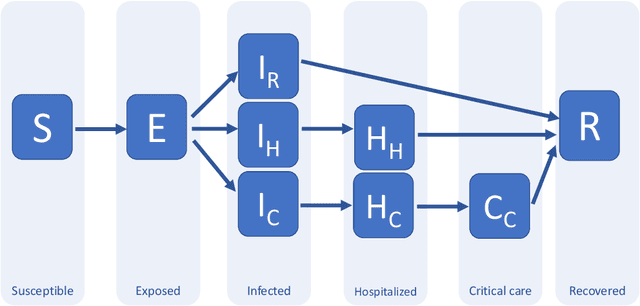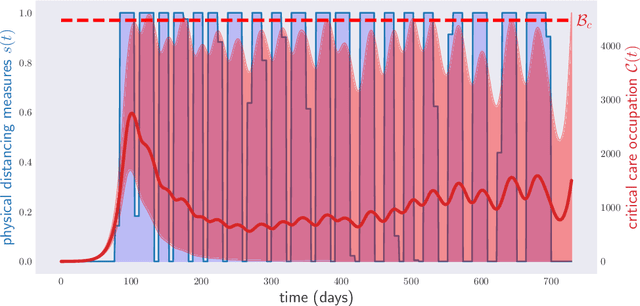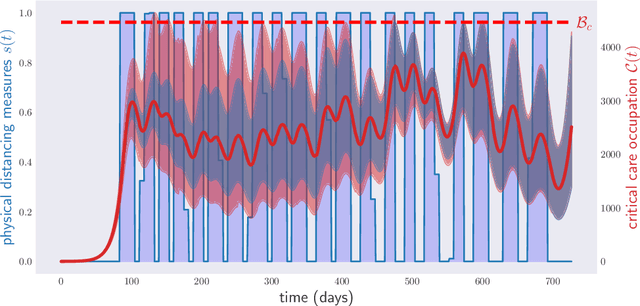Yelena Guryanova
Disease control as an optimization problem
Sep 15, 2020



Abstract:Traditionally, expert epidemiologists devise policies for disease control through a mixture of intuition and brute force. Namely, they use their know-how to narrow down the set of logically conceivable policies to a small family described by a few parameters, following which they conduct a grid search to identify the optimal policy within the set. This scheme is not scalable, in the sense that, when used to optimize over policies which depend on many parameters, it would likely fail to output an optimal disease policy in time for its implementation. In this article, we use techniques from convex optimization theory and machine learning to conduct optimizations over disease policies described by hundreds of parameters. We illustrate our approach by minimizing the total time required to eradicate COVID-19 within the Susceptible-Exposed-Infected-Recovered (SEIR) model proposed by Kissler et al. (March, 2020). We observe that optimal policies are typically very complex, and thus unlikely to be discovered by a human agent.
 Add to Chrome
Add to Chrome Add to Firefox
Add to Firefox Add to Edge
Add to Edge